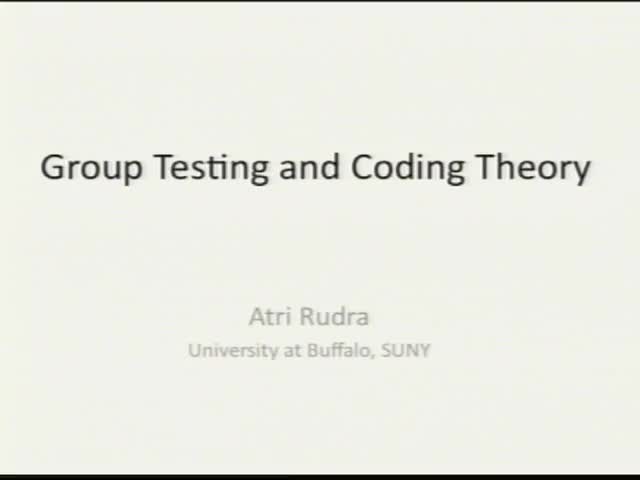Tutorial: Group Testing and Coding Theory
Presenter
February 14, 2012
Keywords:
- Coding theory
MSC:
- 11H71
Abstract
Group testing was formalized by Dorfman in his 1943 paper and was originally used in WW-II to identify soldiers with syphilis. The main insight in this application is that blood samples from different soldiers can be combined to check if at least one of soldiers in the pool has the disease. Since then group testing has found numerous applications in many areas such as (computational) biology, combinatorics and (theoretical) computer science.
Theory of error-correcting codes, or coding theory, was born in the works of Shannon in 1948 and Hamming in 1950. Codes are ubiquitous in our daily life and have also found numerous applications in theoretical computer science in general and computational complexity in particular.
Kautz and Singleton connected these two areas in their 1964 paper by using "code concatenation" to design good group testing schemes. All of the (asymptotically) best know explicit constructions of group testing schemes use the code concatenation paradigm. In this talk, we will focus on the "decoding" problem for group testing: i.e. given the outcomes of the tests on the pools, identify the infected soldiers. Recent applications of group testing in data stream algorithm require sub-linear time decoding, which is not guaranteed by the traditional constructions.
The talk will first survey the Kautz-Singleton construction and then will will show how recent developments in list decoding of codes lead in a modular way to sub-linear time decodable group testing schemes.
